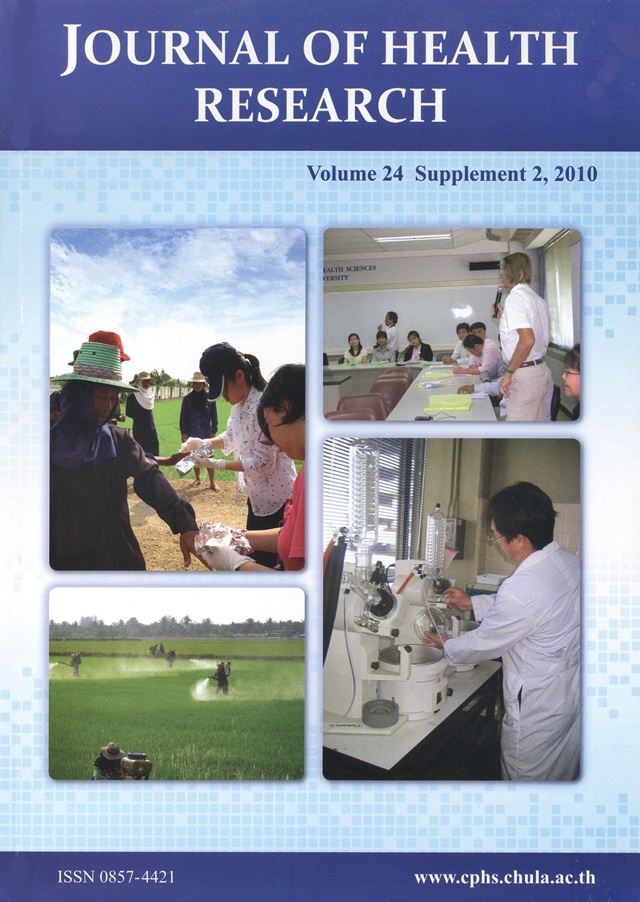Factors Related with Health-Related Quality of Life for Adult Myanmar Migrant Workers in Muang District, Chiang Rai Province, Thailand: a Cross-Sectional Study
Keywords:
adult, Myanmar migrant worker, Chiang Rai, health-related quality of life, Health Perceptions Questionnaire, WHOQOL-BREFAbstract
A cross sectional study, conducted among 401 adult Myanmar migrants between the ages of 18 and 59 years old, was undertaken at Chiang Rai Regional Hospital and Pirom Clinic, located in Muang District, Chiang Rai Province, Thailand. The objectives of this study were: (1) To describe the socio-demographic characteristics, work history, accessibility to health care, and perception related to the Health Belief Model among adult Myanmar migrant workers and (2) To assess the health- related quality of life of adult Myanmar migrant workers. Participants were interviewed through face-to-face interviews guided by a questionnaire comprised of questions regarding socio-demography, work history, accessibility to health care in conjunction with the Health Perceptions Questionnaire (HPQ) and the World Health Organization Quality of Life Survey (WHOQOL BREF). Frequency, percentage, and standard deviation were utilized for the analysis of the descriptive statistics, whereas the chi-squared test was employed to examine the association between the independent variables and health-related quality of life (HrQoL). Respondents consisted mostly of Myanmar women between the ages of 18 and 29 years old, most of who had never received any formal education and were unable to read Thai or Burmese. In addition to having worked in Thailand from between one year and one and a half years, working primarily in industries such as domestic services or food services, they earn between 2,000 and 3,999 baht per month. Most participants travel anywhere between two to three kilometers to reach their preferred health care facility and encountered a wait time of more than thrty minutes. The majority claimed that there was an inadequate amount of translators and forms in different languages. The results demonstrate that nearly half of the participants (56%) demonstrated a moderate level quality of life, followed by high (43.8%) and low (0.20%). The data revealed that the factor that appeared to be the most associated with a higher quality of life level was individual perception related to the Health Belief Model, most notably within domains of current health, susceptibility and resistance to illness, future health, and worry and concern regarding health.Downloads
Published
2018-11-24
How to Cite
Tongprasert, M., Hongsranagon, P., & Havanond, P. (2018). Factors Related with Health-Related Quality of Life for Adult Myanmar Migrant Workers in Muang District, Chiang Rai Province, Thailand: a Cross-Sectional Study. Journal of Health Research, 24(Suppl. 2), 71–76. retrieved from https://he01.tci-thaijo.org/index.php/jhealthres/article/view/157142
Issue
Section
ORIGINAL RESEARCH ARTICLE







